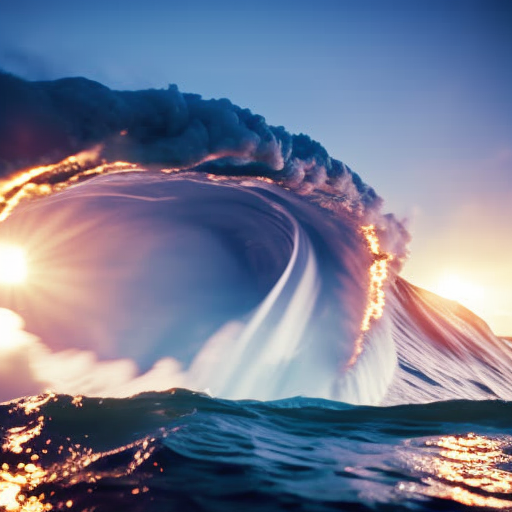Tsunami Research: Understanding and Mitigating the Impact of Destructive Waves
Tsunamis are one of the most devastating natural disasters, capable of causing widespread destruction and loss of life. To better understand and mitigate the impact of these destructive waves, extensive research is being conducted worldwide. This summary explores the key areas of tsunami research, including detection and warning systems, modeling and simulation techniques, and coastal engineering measures.
Detection and Warning Systems
Early detection and warning systems are crucial in minimizing the loss of life and property caused by tsunamis. Scientists and engineers have developed various technologies to detect and monitor tsunamis in real-time. These systems typically consist of a network of sensors, including seismometers, tide gauges, and buoys, that can detect the initial seismic activity and measure the resulting wave height.
Seismic sensors play a vital role in detecting the undersea earthquakes that trigger tsunamis. By monitoring seismic activity, scientists can estimate the size and potential impact of a tsunami. Tide gauges, on the other hand, measure changes in sea level and provide valuable data for tsunami warning systems. Additionally, ocean-based buoys equipped with pressure sensors can detect the passage of tsunami waves and transmit this information to coastal regions, allowing for timely evacuation.
Modeling and Simulation Techniques
To better understand the behavior of tsunamis and predict their impact, researchers use advanced modeling and simulation techniques. These models simulate the propagation of tsunami waves from their source to coastal areas, taking into account factors such as water depth, bathymetry, and coastal topography.
Numerical models, based on the equations of fluid dynamics, are commonly used to simulate tsunami propagation. These models divide the ocean into a grid and solve the equations to predict wave height, velocity, and arrival time at different locations. High-resolution models can provide detailed information about the potential inundation areas and help in developing effective evacuation plans.
Coastal Engineering Measures
Coastal engineering plays a crucial role in mitigating the impact of tsunamis on coastal communities. Researchers and engineers are continuously developing innovative measures to protect coastal areas from the destructive forces of tsunamis. These measures include the construction of seawalls, breakwaters, and tsunami-resistant buildings.
Seawalls and breakwaters are designed to reduce the energy and height of tsunami waves before they reach the shore. These structures act as barriers, dissipating the wave energy and protecting coastal infrastructure. Additionally, tsunami-resistant buildings are designed to withstand the impact of tsunami waves, with reinforced structures and elevated foundations.
International Collaboration and Future Directions
Tsunami research is a global effort, with scientists, engineers, and policymakers collaborating to improve detection, warning systems, and coastal protection measures. International organizations, such as the Intergovernmental Oceanographic Commission (IOC) and the Pacific Tsunami Warning Center (PTWC), facilitate data sharing and coordination among countries.
In the future, research efforts will focus on enhancing the accuracy and speed of tsunami detection and warning systems. This includes the development of advanced sensor technologies and the integration of data from multiple sources, such as satellites and deep-sea sensors. Additionally, researchers will continue to refine modeling techniques to improve the accuracy of tsunami predictions and provide more detailed information about potential inundation areas.
In conclusion, tsunami research plays a vital role in understanding and mitigating the impact of these destructive waves. Detection and warning systems, modeling and simulation techniques, and coastal engineering measures are key areas of focus. Through international collaboration and continuous research, scientists and engineers strive to improve the accuracy and effectiveness of tsunami detection, warning, and mitigation strategies, ultimately saving lives and minimizing the destruction caused by these natural disasters.












